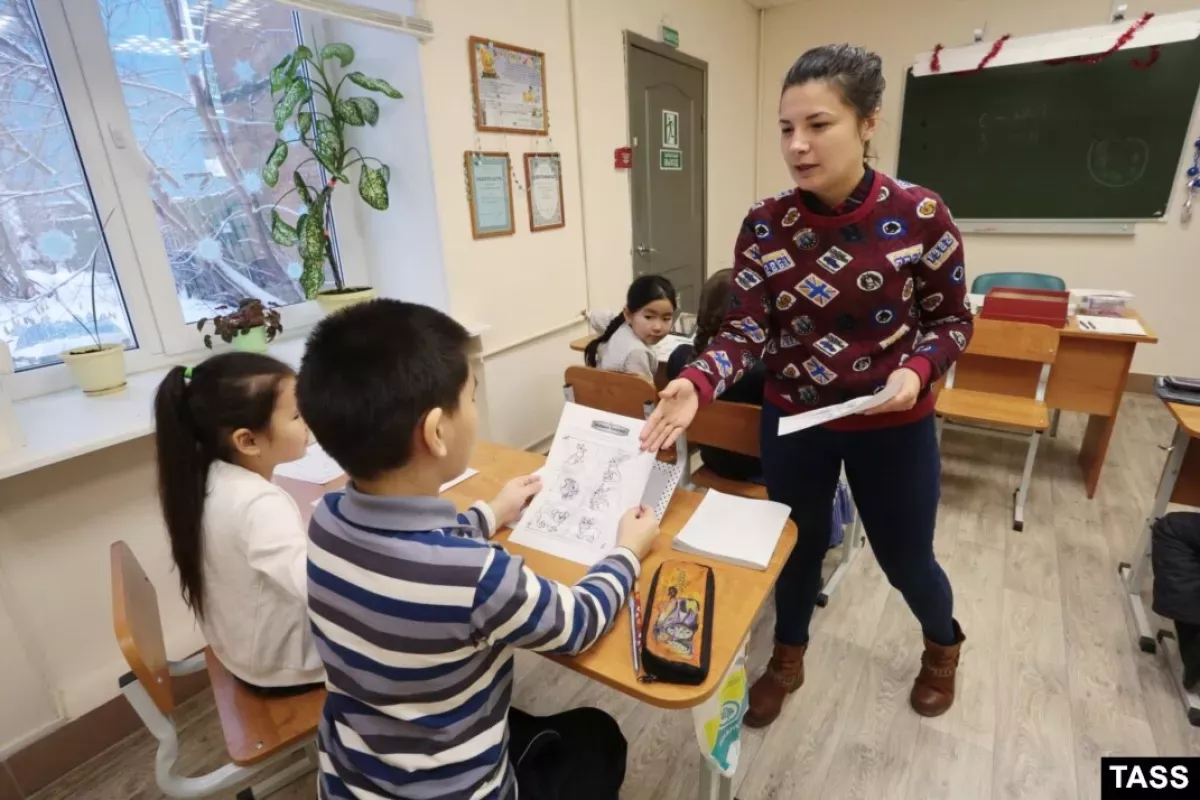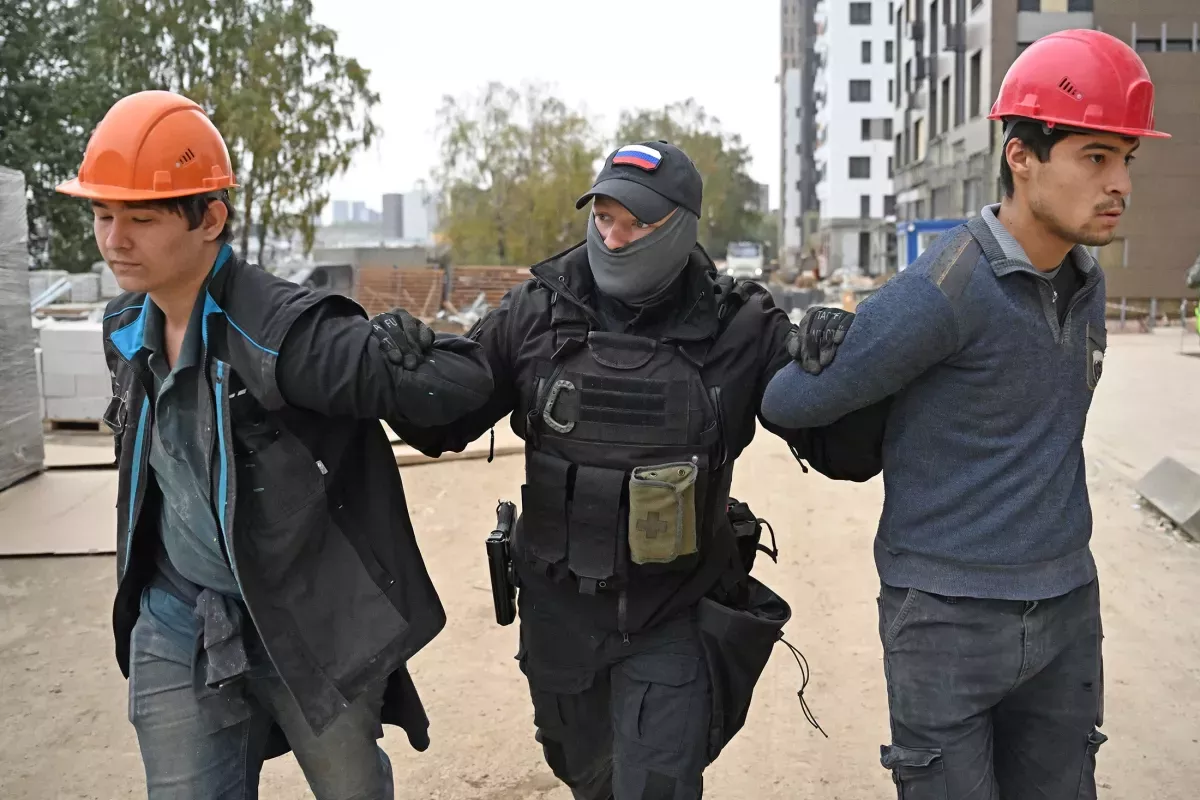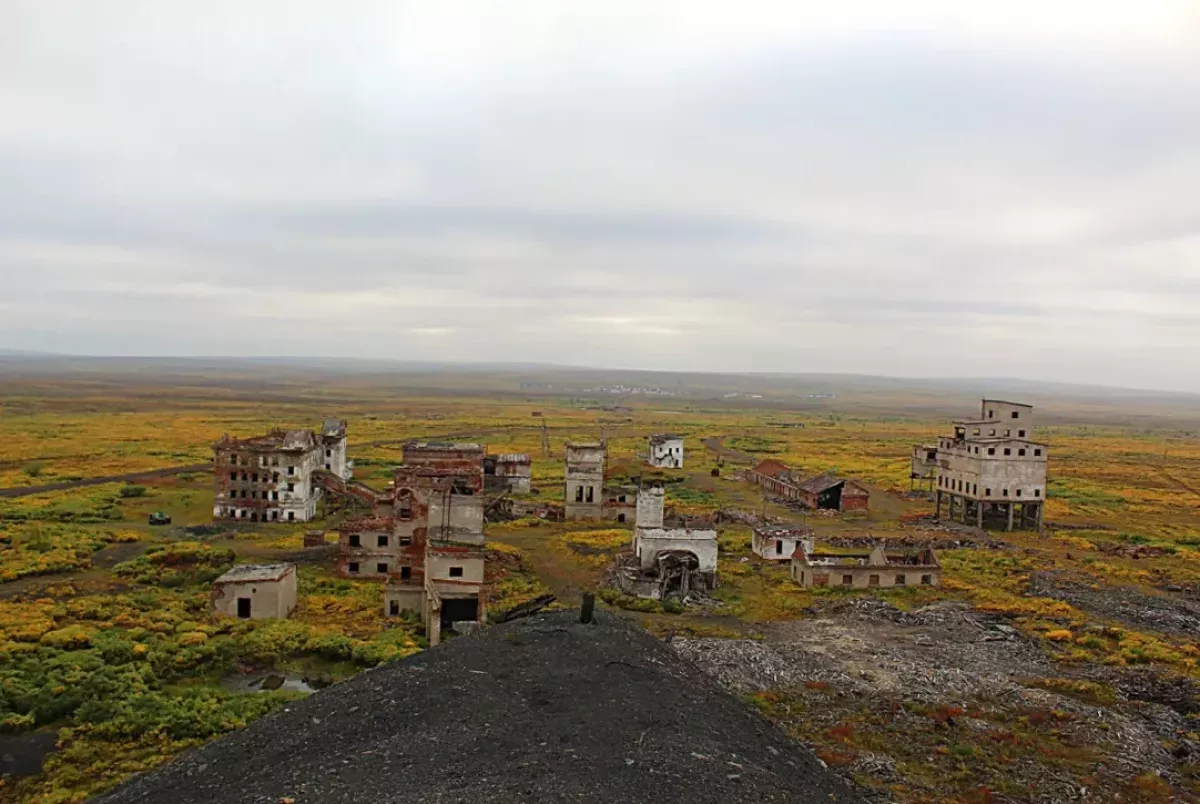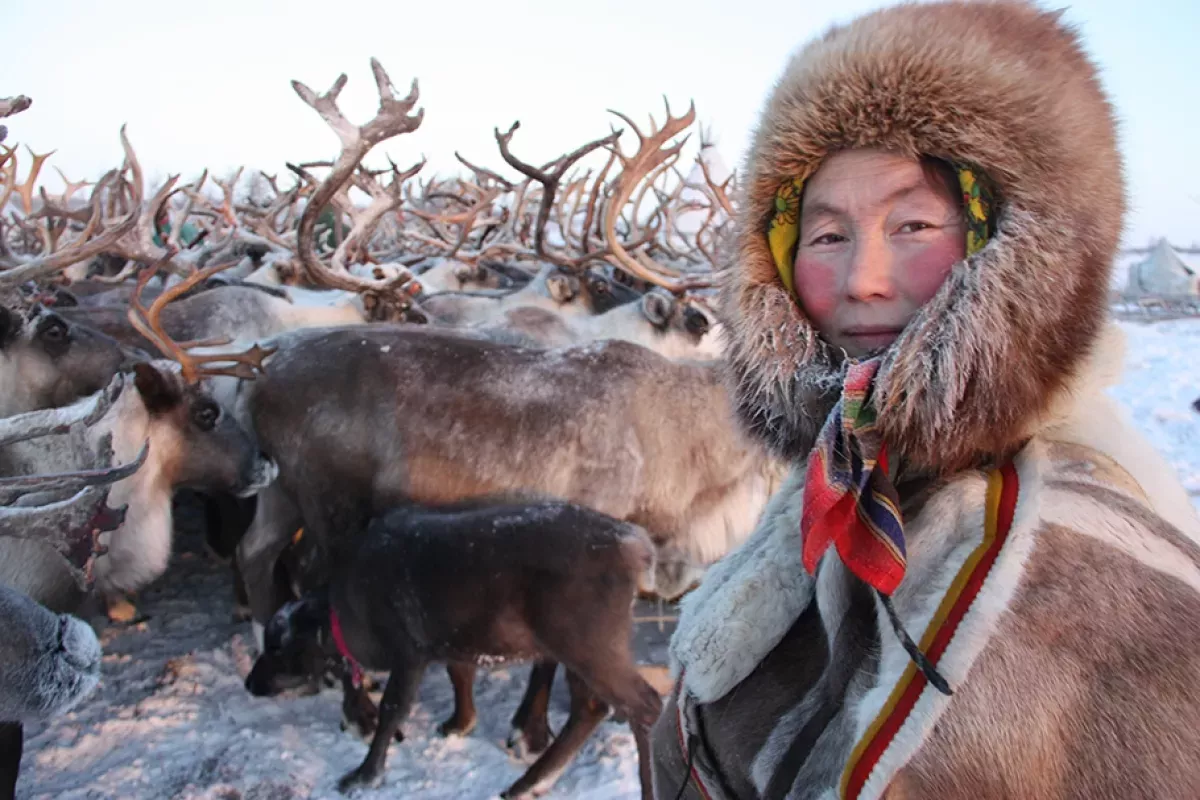Russia’s ethnic intolerance: Targeting migrant children, muslims, indigenous peoples
Recently, we have witnessed the Azerbaijani diaspora in Russia being subjected to racist persecution. Xenophobic policies by Russian officials continue to fuel interethnic and interreligious tensions. This week, the Russian Ministry of Education ordered teachers to monitor students with foreign citizenship in an effort to identify potential future criminals among them. The issue is not limited to foreigners: rising Great Russian nationalism and Orthodox fanaticism also target non-Russian citizens of the Russian Federation, including indigenous peoples. Just recently, a Moscow court, under a contrived pretext, even declared an article by the deputy head of the Spiritual Administration of Muslims—known among Muslim activists for his loyalty to the Russian state—as “extremist.” Considering Russia’s demographic situation and labour reserves, attempts to revive the Great Russian nationalism of the 19th century are doomed to fail, but they could destabilise the country.
Task: Spotting potential criminals among children
Recently, the Russian Ministry of Education circulated a document that lays the groundwork for chauvinistic hysteria. On the websites of several regional education ministries, including Bashkortostan, Sverdlovsk, and Smolensk, a directive appeared instructing teachers to monitor the behaviour of “children with foreign citizenship” and identify any “possible tendencies toward criminal activity.” Once again, the focus is not on all children, but specifically on those with non-Russian passports.
In other words, these children are already being categorised as potential criminals. The same words or actions, if performed by “Russian children” versus “foreign children,” are likely to be interpreted entirely differently under this directive: as mischief, childish pranks, or foolishness when done by Russians, but as signs of criminal inclination when done by foreigners. Given the generally low qualifications of Russian teachers, there is little reason to expect this directive to be applied with any tolerance or nuance.

Moreover, the authors of the document themselves do not inspire confidence, as evidenced by the attached list of supposed signs of a tendency toward criminal behaviour. Among these “signs” are not only the obvious, such as indications of drug use. Teachers are also encouraged to watch for disregard toward “historical memory, traditional Russian values, state symbols,” and—most importantly—toward the political information presented in the lessons called Conversations About Important Matters following Russia’s invasion of its fraternal neighbour.
However, future criminals may cunningly hide their intentions, so the guidelines instruct teachers to pay attention to children who have difficulties adapting, create conflicts, or break rules. The authors also consider it important to monitor children whose speech includes words or expressions “unrelated to the knowledge acquired during the educational process.” This effectively puts students who read extracurricular books on the list of potential wrongdoers. Naturally, the list of supposed signs of future criminals also includes those wearing clothing or personal items with “symbols and insignia of religious radicalism, extremism, or subcultures associated with criminal activity,” as well as foreign-born children who access online resources containing destructive content. Given adolescent maximalism, this guarantees widespread pressure on children with non-Russian citizenship.
The grounds for xenophobia in Russian schools are being laid by officials whose agencies were recently involved in racist “investigations” targeting Azerbaijanis in Russia. Alexander Bastrykin, head of the Investigative Committee, recently made a chauvinistic statement regarding children: “Criminal behavior among underage migrants is a matter of serious concern. The number of crimes committed by them increased in 2024 by 8%, from 353 to 381. At the same time, the number of particularly serious offenses by teenage migrants rose by 82% (from 66 to 120).”
This xenophobic assessment borders on slander, as the figures lack context and scale. We are not told how the crime rate among migrants compares with that of Russian children, nor is it clarified to what extent the rise in juvenile crime is linked to the increase in the migrant population. It is generally unclear whom Bastrykin is referring to—after all, crime statistics in Russia are broken down only by Russian versus foreign citizenship, or lack of any citizenship. In other words, a so-called “migrant” may, on closer inspection, actually be a Russian child who has long lived in the country—or even been born and raised there.

Moreover, Russia actually needs migrants. Even though, compared with Western countries, it provides them with almost nothing, their numbers continue to grow due to historical ties, geographic proximity, and the demands of the Russian economy. This is especially evident in the statistics following Russia’s invasion of Ukraine. In 2022, there were 5.7 million foreigners in Russia; by the beginning of this year, that number had risen to 6.3 million, despite stricter entry requirements and increasing restrictions on employment.
Russian regions collected 97.2 billion rubles (over $1.2 billion) in 2022 from migrant patent taxes alone, and nearly 124 billion rubles (over $1.5 billion) in 2024. At the same time, only about 112 million rubles (nearly $1.4 billion) were spent in 2024 on the socio-cultural adaptation of immigrants. Claims that migrants exploit the social system or healthcare are laughable—high-quality medical services in Russia are available only for money, and social benefits are negligible.
Study of non-Russian languages violates sanitary norms
But Russian xenophobia is not limited to holders of foreign passports. The emphasis on Great Russian ethnic nationalism is already affecting the indigenous peoples of Russia. This focus is visible even at the symbolic level. Across the country, monuments are being erected to some of the most chauvinistic figures of the Tsarist era, such as the embezzling-patriot Minister Uvarov. At the same time, state funds and the title of “Honoured Artist” are awarded to SHAMAN, who openly appeals to the racism of the Third Reich, performing songs like “I am Russian.” By “Russian,” he means an Orthodox Great Russian.
The number of such Russians in the country is steadily declining, making the fixation of many Russian officials on blatant Great Russian chauvinism all the more absurd. Just last week, it became clear that 129 small towns in Russia are on the verge of disappearing due to population decline and migration—primarily in predominantly Great Russian regions, as well as Russified areas—including Pskov, Tver, Bryansk, Sverdlovsk, and others, plus the Komi Republic, Karelia, and even Moscow Oblast.

Moreover, Russian officials are intensifying chauvinistic pressure on the country’s ethnic groups that play an increasingly important role in national life. By reviving Tsarist traditions, they are rolling back the remnants of Soviet national policies. This week, it emerged that the Russian Ministry of Education has reduced the already scarce native language lessons in primary schools where they still exist. For example, first-graders will now begin studying their native language not from the start of the school year (even as a marginal subject, since Russian long dominates), but only from the second term.
This immediately sparked protests in several dynamic regions of Russia, including Tatarstan and Yakutia. Why does it matter? One can judge by the number of Tatar names in the Russian army and state institutions, or by the role of Yakut diamonds in Russian foreign trade. The official explanation sounded almost mocking: the reduction of native language lessons is allegedly due to sanitary and epidemiological rules, supposedly to prevent a “lack of physical activity.”
Tatars are offered a “historical place” as janitors
The same crude attitude is displayed by xenophobic officials toward the religions of Russia’s non-Russian peoples—an approach that already fuels extremist outbursts and will sooner or later lead to large-scale problems. This week, following an inciting campaign by a pseudo-scholar charlatan, the Moscow City Court declared a book edited by Damir Mukhetdinov, First Deputy Chair of the Spiritual Administration of Muslims (DUM) of Russia, extremist. The justification came from a “destructology” examination conducted by Roman Silantyev, the creator of the so-called science of destructology, who has no serious publications by international standards but is known for antisemitic statements. Silantyev accused Mukhetdinov of mentioning “persons and groups involved in terrorist activities” in two entries of the dictionary—“Wahhabis of the North Caucasus” and “History of Islam in Chechnya.” It should be noted that the mentions were entirely appropriate and made without any justification of wrongdoing.
The campaign against the Spiritual Administration has been ongoing for some time. It has repeatedly targeted the organisation for attempting to create a space for Muslim peoples within the Russian state through integration and reinterpretation of Russian ideology. Russian nationalists attacked DUM both for allowing prayer (namaz) to be read in a church—with the priest’s permission—and for stating that Russia’s origins trace back to the Horde and Khazaria, which displeases Great Russian Orthodox chauvinists.

Russian officials and ideologues are unwilling to recognise the rights of not only migrants but also the country’s indigenous peoples. More precisely, they refuse to see non-Russian peoples as partners in building the Russian state, offering them instead the role of domestic servants. A telling example occurred last winter when the Spiritual Administration of Muslims (DUM) of Russia came under attack for displaying a painting titled Battle of the Kalka, in which the victors were not Russians but the ancestors of several Turkic and Mongol peoples of Russia.
In response, Marina Akhmedova, a member of the Presidential Council for Human Rights, remarked: “At DUM, they always squeal that any criticism is an infringement on interethnic friendship. Yet some paintings truly embody friendship. For example, Konstantin Kustodiev’s Frosty Day, which depicts a Tatar janitor, perfectly reflects the concept of friendship among peoples. Tatar janitors in Moscow courtyards are mentioned repeatedly in great literary works… They served as the ears and eyes of the local police and were direct assistants to city constables. When a constable blew the whistle, all janitors would rush to help apprehend a criminal or stop a fight.” Commenting further seems unnecessary—the example speaks for itself.
The attacks on the DUM are not merely a clash of differing viewpoints. They represent a confrontation between state-funded Great Russian chauvinists and an organisation that represents the interests of numerous Muslim peoples in Russia. Importantly, DUM’s advocacy extends beyond religion: figures like Damir Mukhetdinov have also defended the right of non-Russian peoples in Russia to study their native languages in schools.
In response, the so-called “destructologist” Roman Silantyev recently discussed with Alexander Bastrykin the possibility of banning the Council of Muftis of Russia and DUM RF as “the most criminalised religious organisations in the country.” Familiar phrasing, isn’t it? Similar expressions were used during the campaign against the Azerbaijani diaspora in Russia.
In other words, xenophobia in Russia has permeated both the state apparatus and society at all levels. Meanwhile, Russian history offers numerous warnings about the dangers of this path for a multinational country built by a wide variety of peoples—Georgian and Baltic German nobles, Ukrainian settlers in Asian frontiers, Kalmyk and Bashkir warriors, and many others.
The upcoming Russian magazine Gosudarstvo (“State”) aims squarely at the bureaucratic elite. In its flagship article, “Questions and Tasks of Domestic Policy of the Russian State in Different Historical Epochs,” it recounts how the Empire thrived until the revolutionary upheavals weakened it on the eve of World War I. The author then adds: “Many historians reasonably see a foreign hand in this chain of events.”
This, perhaps, is the central idea of the otherwise dull piece by Boris Rapoport, deputy head of the Presidential Administration’s Department for Monitoring and Analyzing Social Processes, known for solving complex election-related issues. It recalls an old Soviet joke: at a Politburo meeting, they proposed awarding Tsar Nicholas II the Order of the October Revolution “for his contribution to its preparation and execution.”
Yet, as this shows, even the eloquent collapse of Tsarism does not prevent Russian nationalist thinkers—now entrenched in power—from seriously reviving tsarist racism toward “inorodtsy” (non-Russian peoples), fueled by the misanthropic Great Russian chauvinism.








